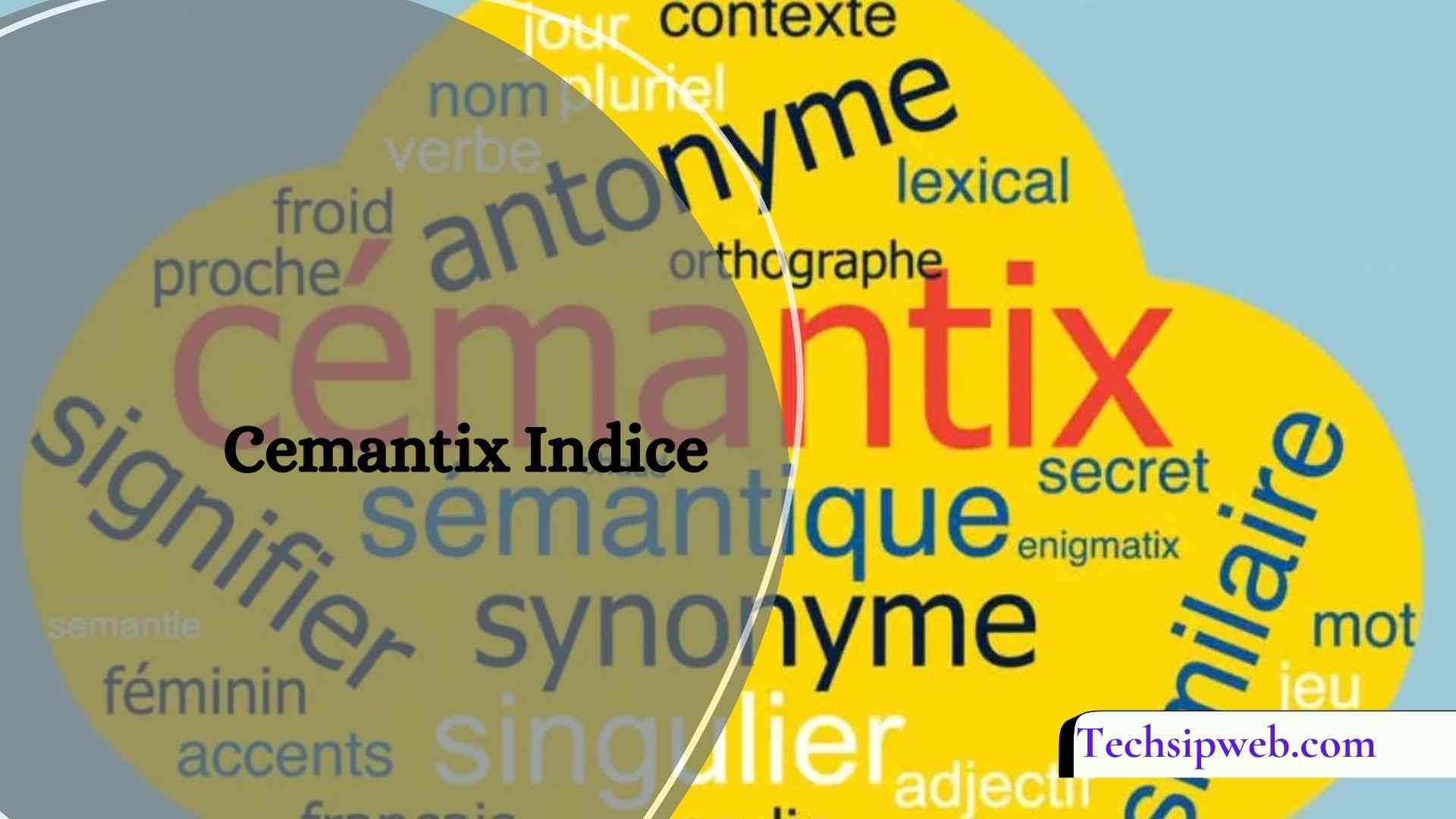Cemantix Indice is a semantic similarity tool that compares word or sentence meanings using embeddings. It helps in language tasks like search, chatbots and content matching.
Stay tuned with us as we dive deeper into Cemantix Indice—uncovering how it works, where to use it and why it matters in today’s AI world. More tips and insights coming soon!
The Origins and Evolution of Semantic Indice
The term “Semantics” originates from the word semantic, which relates to the meaning of language rather than just its form. The Semantic Indice evolved out of a need to quantitatively measure the similarity of meaning between different pieces of text — an essential requirement as search engines, AI assistants, and recommendation engines grew more sophisticated.
Early attempts at measuring similarity relied on simple keyword overlap, but this approach often failed when synonyms or context came into play. The Semantic Indice is part of a new generation of semantic similarity metrics that use statistical and machine learning models trained on massive language datasets.
Technical Foundations: How Semantic Index is Computed?

To fully appreciate Semantix Indice let’s look at the key technologies it builds on:
Word Embeddings
At the heart of Cemantix Indice are word embeddings — mathematical representations of words as vectors in a multi-dimensional space. Common models include:
- Word2Vec: Captures contextual similarity by analyzing co-occurrence in text.
- GloVe: Combines global word co-occurrence counts with vector space modeling.
- BERT and Transformer Models: Provide context-aware embeddings that adjust meaning based on sentence structure.
Similarity Metrics
Once words or phrases are vectorized, the index calculates similarity using measures like:
- Cosine Similarity: Measures the cosine of the angle between two vectors.
- Euclidean Distance: Measures the straight-line distance between vectors.
- Manhattan Distance: Adds the absolute differences of vector components.
The Semantic Indice often normalizes these similarity scores into a scale (e.g., 0 to 1) that indicates semantic closeness.
Practical Applications of Semantic Indice
The ability to quantify semantic similarity unlocks a wide variety of applications:
Semantic Search and Information Retrieval
Search engines using Cemantix Indice can understand user queries even if the exact keywords aren’t present in documents. For example, searching for “heart attack symptoms” can also find results about “myocardial infarction signs,” thanks to semantic similarity.
Intelligent Chatbots and Virtual Assistants
These systems rely on semantic understanding to interpret user intent accurately, making conversations more natural and helpful.
Content Creation and SEO Optimization
Marketers use Semantic Index to identify related keywords and topics that improve SEO by targeting a broader but relevant set of search queries.
Document Clustering and Classification
Large datasets of documents can be grouped based on their semantic content, aiding tasks like news categorization or legal document analysis.
Plagiarism Detection
By comparing the semantic content rather than just exact phrases, Cemantix Indice helps identify paraphrase plagiarism effectively.
Semantix Indice vs Other Semantic Similarity Measures
While Cemantix Indice is powerful it is important to understand how it compares with other approaches:
| Method | Description | Strengths | Limitations |
| Keyword Matching | Checks exact word overlap | Simple, fast | Fails on synonyms and paraphrasing |
| Latent Semantic Analysis (LSA) | Statistical technique analyzing word-document matrices | Good for capturing latent topics | May miss nuanced context |
| Word Embeddings + Cosine Similarity | Vector-based semantic similarity | Context-aware, scalable | Depends on quality of embeddings |
| Cemantix Indice | A semantic similarity index based on embeddings | High accuracy, adaptable | Computationally intensive |
Challenges in Using Semantic Index
Though powerful, the Cemantix Indice also faces some challenges:
- Language Ambiguity: Words with multiple meanings can confuse semantic similarity measures unless contextual models like BERT are used.
- Resource Intensity: Computing embeddings and similarity scores for large datasets requires significant computational resources.
- Domain Adaptation: Generic embeddings may not perform well in specialized domains (e.g., medical or legal) without domain-specific training.
Future Trends: Where is Cemantix Indice Headed?
The future of semantic similarity indices like Cemantix Indice looks promising, with innovations including:
- Contextualized and Dynamic Embeddings: Models that adapt based on evolving language use and domain-specific needs.
- Cross-lingual Semantic Similarity: Measuring similarity across different languages for better global applications.
- Integration with Multimodal Data: Combining text with images, audio, or video to enrich semantic understanding.
- Real-time Semantic Analysis: Faster algorithms enabling real-time interaction in AI assistants and conversational agents.
How to Implement Cemantix Indice in Your Projects?
For those interested in practical use here is a brief roadmap:
- Select a Pre-trained Embedding Model (e.g., BERT, Word2Vec).
- Convert your text inputs into embeddings.
- Calculate similarity scores using cosine similarity or other distance measures.
- Apply thresholds or clustering based on your specific use case.
- Optimize and fine-tune models with domain-specific data for better results.
FAQ’s
1. Can Cemantix Indice work in different languages?
Yes, but it works better in popular languages like English or Spanish. For less common languages, it might not be as accurate unless you use special tools like multilingual models (such as mBERT) that are trained to understand many languages.
2. Can Cemantix Indice be used in real-time apps like chatbots?
Yes, it can, but it needs to be optimized. Since it takes some time to calculate meanings, developers use faster methods like caching or smart search tools (like FAISS) to speed it up for apps that need quick responses.
3. Can Cemantix Indice understand sarcasm or jokes?
Not really. Cemantix Indice focuses on the meaning of words, but sarcasm or jokes often mean the opposite of what is said. You’d need to use other tools trained to spot sarcasm for better results.
4. Does it work well with long text or articles?
Long texts can confuse the tool because they include many topics. It works better if you break big texts into smaller parts. Then it can compare meanings more accurately.
5. Can someone trick Cemantix Indice with fake or tricky text?
Yes, it is possible. Some people can write in a way that looks similar but actually means something else. To protect against this, developers use extra checks or combine it with other smart tools.
Conclusion:
Cemantix Indice is a smart tool that helps find meaning between words and texts. It’s useful for many things like search, chatbots, and more. With the right setup, it gives fast and helpful results. Whether you’re a beginner or expert, it’s a great way to explore language meaning.







